Q
What are the different models of Subaru Crosstrek?
In Malaysia, the Subaru Crosstrek comes with two main powertrain options. There's the petrol variant packing a 2.0-liter naturally aspirated flat-four engine, good for 156 horsepower and 196 Nm of torque. Then there's the e-Boxer hybrid, which delivers a combined 150 horsepower. The petrol model comes standard with Subaru's Lineartronic CVT and their Symmetrical AWD system, while the hybrid uses electric motor assistance to boost fuel efficiency.
Riding on Subaru's Global Platform, the current Crosstrek boasts a 70% increase in body rigidity. It also features the EyeSight driver assistance suite, including pre-collision braking and lane-keeping assist. With a generous 220mm of ground clearance, it's well-suited for Malaysia's rain-prone roads.
Interestingly, you might know this model as the XV in some markets, but Subaru standardized the Crosstrek name globally back in 2018, and Malaysia followed suit. All variants come with X-Mode as standard – handy for those muddy or gravelly bits, as it automatically shuffles torque where it's needed most. Out back, the double-wishbone independent suspension setup strikes a nice balance between on-road composure and light off-road capability.
Special Disclaimer: This content is published by users and does not represent the views or position of PCauto.
Related Q&A
Q
How often do you need to replace tires on a Subaru Crosstrek?
Regarding the recommendation on the tire replacement frequency for the Subaru Crosstrek, it mainly depends on the tire wear, driving habits, and the road conditions in Malaysia. Generally speaking, the service life of tires is about 50,000 to 80,000 kilometers or around 5 years, but the specific replacement time should be determined according to the actual wear. The rainy and humid climate in Malaysia and the frequent starting and stopping on urban roads will accelerate tire wear. It is recommended that car owners check the tire tread depth (the legal minimum depth is 1.6 millimeters) every 10,000 kilometers and pay attention to whether there are cracks or bulges on the tire sidewalls. If you often drive on gravel roads or take long - distance highway trips, you may consider replacing the tires earlier.
Subaru's Symmetrical All - Wheel Drive system has relatively high requirements for tire matching. It is recommended to replace all four tires at the same time to maintain balanced grip. In addition, choosing tires suitable for the tropical climate (such as models with excellent wet - road performance) can improve driving safety during the rainy season. Regular tire rotation (every 8,000 - 10,000 kilometers) also helps to extend the tire service life.
Q
Does the Subaru Crosstrek have a spare tire?
Yes, the Subaru Crosstrek models sold in the Malaysian market are usually equipped with a full-size spare tire. This is a standard configuration provided by the Subaru brand to ensure that drivers can replace the tire in time when encountering tire problems. The spare tire is usually placed under the trunk, making it convenient for users to use in emergencies. For drivers in Malaysia, a full-size spare tire is particularly important for long-distance driving or in areas with poor road conditions, providing better safety assurance.
In addition, the Subaru Crosstrek is also equipped with a full-time all-wheel-drive system, which further enhances the vehicle's stability and passability on complex road conditions. This is also one of the reasons why many Malaysian consumers choose this car. In daily use, it is recommended to regularly check the tire pressure and condition of the spare tire to ensure that it can be used normally when needed. At the same time, knowing how to replace the spare tire correctly is also a basic skill that every driver should master.
Q
Does the Subaru Crosstrek have folding mirrors?
Yes, some high - end models of the Subaru Crosstrek available in the Malaysian market are equipped with the power - folding rear - view mirror function. This design is very practical in narrow parking spaces or when passing other vehicles, effectively reducing the risk of the rear - view mirrors being scratched. The specific configuration may vary depending on the year and model version. It is recommended to confirm the latest specifications with local authorized dealers before purchasing a car.
Apart from the folding function, the rear - view mirrors of Subaru models usually also integrate functions such as heating for defogging and power adjustment. These details reflect the brand's consideration for practicality. It's worth mentioning that the rear - view mirror folding function is particularly useful in Malaysia's rainy climate and crowded urban environment. Many Japanese brands like Toyota and Honda also commonly equip similar configurations on their mid - to high - end models.
If your Crosstrek doesn't have this function, you can also achieve it through third - party modification. However, it's necessary to pay attention to choosing accessories that meet the JPJ certification in Malaysia to ensure driving safety.
Q
Does the Subaru Crosstrek have rear control arms?
The rear suspension system of the Subaru Crosstrek features a multi-link independent suspension design. This design indeed includes rear control arms as an important part. They are mainly responsible for connecting the wheels to the vehicle body and controlling the movement trajectory of the wheels, ensuring driving stability and comfort. On the diverse road conditions in Malaysia, this suspension design can effectively absorb road vibrations, providing better handling and riding experience. To expand a bit, the multi-link suspension system is generally more complex and costly than simple suspensions like the torsion beam. However, it can better balance comfort and sportiness, making it suitable for car owners who often drive long distances or enjoy outdoor adventures. Subaru's Symmetrical AWD system paired with this suspension further enhances the vehicle's performance on slippery or rough roads, which is especially useful during the rainy season or on suburban roads in Malaysia. If you're interested in suspension maintenance or upgrades, you can regularly check the wear of the control arm bushings and ball joints, as these are the key components affecting the suspension's lifespan.
Q
Does the Subaru Crosstrek have automatic wipers?
Yes, the Subaru Crosstrek is equipped with an automatic wiper function on some high - end models. This technology is commonly known as the rain - sensing wiper. It detects the intensity of rainfall through sensors on the front windshield and automatically adjusts the wiper speed. This allows drivers not to operate the wipers manually in rainy days, enhancing driving convenience and safety. Given Malaysia's rainy climate, this function is very practical as it can reduce the frequency of drivers being distracted by operating the wipers. It should be noted that the automatic wiper is not a standard feature across all Crosstrek models. The specific configuration needs to be confirmed according to the model year and version. It is recommended to check the official configuration list or consult local dealers before purchasing a car. Besides Subaru, other brands like Toyota and Honda also have similar technologies, but they may have different names. For example, Toyota calls it the "raindrop - sensing wiper". The principles are largely the same, all achieving automatic adjustment through optical or capacitive sensors. Such intelligent features are gradually becoming common in modern cars, especially suitable for use in regions with a tropical rainforest climate like Malaysia.
Q
Does the Subaru Crosstrek have good visibility?
The Subaru Crosstrek has truly received a lot of praise from many car owners for its visibility performance. Its design fully takes into account the visibility needs of drivers. The front windshield is wide and the inclination angle of the A-pillar is reasonable, which reduces visual blind spots. At the same time, the relatively high seat position allows drivers to more easily grasp the road conditions in the front and on the sides. This is especially useful for the changeable urban roads and suburban environments in Malaysia. The design of the rearview mirrors and the rear window also provides a good rear view, which helps improve safety when parking or changing lanes. To expand a bit, a good visibility design can not only boost driving confidence, but also reduce the risks caused by unclear vision when driving in the rainy days that are common in Malaysia. Subaru has always attached great importance to driving safety, and the Crosstrek is also equipped with the EyeSight driver assistance system, which further compensates for the visibility limitations in extreme weather. If you often encounter congested or narrow roads, the visibility advantage of this car will be more obvious. Of course, the actual experience may vary slightly depending on personal height or driving habits. It is recommended to take a test drive at a local dealership to feel it for yourself.
Q
Does the Subaru Crosstrek have front parking sensors?
According to the configuration information of the Subaru Crosstrek in the Malaysian market, this model does not come standard with front parking sensors. However, some high - end versions or vehicles with post - purchase modifications by owners may be equipped with this feature. For Malaysian consumers who value parking assistance functions, it is recommended to directly confirm the specific configuration with the dealer when purchasing a car, or consider choosing to install original factory accessories to ensure compatibility.
In fact, the parking assistance systems commonly found in modern vehicles are divided into two technical routes: sensors and cameras. The former uses ultrasonic waves to detect the distance to obstacles and issue an alarm, while the latter provides visual image assistance. It's worth noting that even without front sensors, the EyeSight driver assistance system, which comes standard across all Subaru Crosstrek models, can still provide collision warning through the front - mounted camera, indirectly enhancing safety during low - speed driving.
If you often face narrow parking situations, you can also consult the authorized service center about the installation plan for an integrated front - and - rear radar system. Such an upgrade usually preserves the integrity of the original vehicle's electronic system. In Malaysia's rainy climate, it's also an important usage habit to regularly clean the surface of the sensors to ensure their sensitivity.
Q
Does the Subaru Crosstrek have a 360 camera?
Based on the current configuration information of the Subaru Crosstrek in the Malaysian market, the 360-degree panoramic camera system is not standard on this model. However, some high - end versions may be equipped with auxiliary driving features such as a rear - view camera and blind - spot monitoring. For consumers who value a panoramic view, they can consider installing a third - party 360 - degree camera system later. But it should be noted that this may affect the original factory warranty terms. In Malaysia's rainy and humid climate, a 360 - degree camera can indeed improve driving safety, especially when driving on narrow roads or parking in rainy days. Currently, some models of Japanese cars in the same class, such as the Toyota Corolla Cross and the Honda HR - V, have started to come with an original 360 - degree camera, which reflects the growing market demand for panoramic imaging technology. It is recommended that potential car buyers directly consult Subaru's authorized dealers in Malaysia for the latest configuration details. At the same time, they can also compare the actual performance of driving assistance systems of different brands to choose the model that best suits their needs. It's worth noting that driving assistance systems are just a supplement to safe driving, and maintaining a focused driving attitude is the core of driving safety.
Q
Does the Subaru Crosstrek have automatic braking?
Yes, the Subaru Crosstrek is equipped with an Automatic Emergency Braking system (AEB for short). This is a core feature of the Subaru EyeSight driver assistance technology suite. It's designed to monitor vehicles or pedestrians ahead through a front - mounted camera. When a potential collision is detected, it automatically applies the brakes to reduce the risk of impact or avoid an accident. This technology is especially useful for the ever - changing city and highway driving conditions in Malaysia.
In addition to AEB, the EyeSight system also includes functions such as adaptive cruise control, lane - keeping assistance, and prevention of accidental accelerator use, which further enhance driving safety. Subaru's EyeSight system has performed excellently in multiple global safety evaluations. For example, it has received a five - star rating from ASEAN NCAP, which proves its reliability.
For Malaysian consumers, this kind of active safety technology can effectively handle common local sudden traffic situations, such as motorcycles cutting in or sudden braking. It should be noted that the system's performance may be affected by weather or visibility, and drivers still need to stay focused. Currently, most Japanese and European models in the same class also offer similar functions, but Subaru's camera - based solution has unique advantages in cost - control and adaptability.
Q
Do Subaru Crosstreks have blind spot monitoring?
Yes, some models of the Subaru Crosstrek are indeed equipped with a Blind Spot Monitoring system (BSM for short). This feature is quite common in the high - end versions in the Malaysian market. For example, models with the EyeSight driver assistance system usually integrate this technology. It uses the rear bumper radar to detect vehicles on the side and rear, and displays warning icons on the rear - view mirror or dashboard to enhance the safety of lane - changing. For Malaysian consumers, this function is especially useful on highways or in congested sections, effectively reducing the risk of accidents caused by blind spots.
It should be noted that there may be differences among Crosstreks of different years and configurations. It is recommended to confirm the specific list of functions with local dealers before purchasing a car. Additionally, blind spot monitoring is usually used in conjunction with Rear Cross - Traffic Alert (RCTA), which further strengthens protection when reversing. Such active safety technologies have become standard features for many brands, like Toyota's TSS or Honda's Honda SENSING. However, the algorithms and sensitivities of each system may vary slightly due to brand - specific tuning.
If budget allows, it is recommended to give priority to models with a complete set of driver assistance functions. After all, the rainy climate and complex road conditions in Malaysia pose higher requirements for driving safety.
Latest Q&A
Q
How to change the ambient lighting in a Jaguar F-Pace?
Changing the ambient lighting color in your Jaguar F-Pace is a breeze. First, fire up the vehicle and make sure the infotainment screen is on. Then, head into the main menu and look for the "Vehicle Settings" option. Select "Ambient Lighting" from there, and you'll see a bunch of preset colors to choose from—blues, reds, whites, that sort of thing. Just tap your favorite on the touchscreen, and the system applies it right away. You can also tweak the brightness to fit different driving conditions. If you're a Malaysian owner, it's best to do this at night or in dimly lit areas so you can really see how it looks.
The ambient lighting in the F-Pace isn't just about upping the interior's premium vibe; it lets you set the mood in the cabin to match your personal style. It's a pretty common feature in luxury brands these days—Mercedes and BMW offer similar stuff—but what sets Jaguar apart is how well the lighting pairs with the interior materials. It just makes the whole cabin feel that much more luxurious. If you're really into customizing your in-car lighting, swing by your local Jaguar dealer and ask if there are any extra customization options or upgrade services available.
Q
How to set up cruise control in Jaguar F-PACE?
To set up cruise control in your Jaguar F-Pace, first make sure you’re on a road where it’s safe to use—you’ll need to be going at least 30 km/h. Hit the cruise control button on the left side of the steering wheel (it usually says "CRUISE" or has a speedometer icon), and you’ll see the cruise ready indicator pop up on the dashboard. Next, use the "+" or "-" buttons to set your desired speed, and the system will hold it steady. Need to pause? Just tap the brake or hit "CANCEL". To get back to your set speed, press "RES".
For our Malaysian drivers, a quick heads-up: be extra cautious using this on busy roads or in the rain. Don’t zone out and rely too much on the system—always keep an eye on what’s happening around you. The F-Pace’s standard cruise is solid, but step up to higher trims and you might get Adaptive Cruise Control (ACC), which automatically adjusts your speed to keep a safe gap from the car ahead. Either way, *you’re* still in charge—never take your focus off driving.
Lastly, keep those brakes and tires in check; regular maintenance helps the cruise control work like a charm. If you see any warning lights or the system acts up, swing by an authorized Jaguar service center in Malaysia to get it sorted out. Safe travels!
Q
What's the price of the Jaguar F-Pace?
In Malaysia, the price of the Jaguar F-PACE can vary depending on the trim level, optional extras, and current market promotions. Right now, you're looking at a starting price range of around RM 400,000 to RM 600,000 for a brand-new model. For the most up-to-date figures, it's always best to check in with your local authorized Jaguar dealer.
As Jaguar's luxury SUV offering, the F-PACE doesn't skimp on choice under the hood. You've got efficient Ingenium turbocharged engines for everyday driving, and if you're after a bit more punch with some eco-credentials, there's the potent PHEV plug-in hybrid version too – it really strikes a nice balance between performance and fuel efficiency.
What stands out about this Jag is its elegant design language, a nicely crafted interior, and all the latest tech. The Pivi Pro infotainment system comes as standard, and you get a comprehensive suite of driver assistance features. It's a solid pick for Malaysian buyers who want that blend of luxury and a bit of driving excitement.
On top of that, Jaguar has a pretty well-established after-sales service network in Malaysia. Owners can take advantage of the brand's warranty coverage and maintenance services, which definitely adds peace of mind to the ownership experience.
If the F-PACE has caught your eye, it's worth cross-shopping with other premium SUVs in its class, like the BMW X3 or Mercedes-Benz GLC. That way, you can make a really well-rounded decision before signing on the dotted line.
Q
How many seats is the Jaguar F-PACE equipped with?
The Jaguar F-PACE, a premium midsize SUV, comes standard with a 5-seat layout in a 2+3 configuration, easily handling most families' daily travel needs. The seats strike a nice balance between sporty support and all-day comfort, making them ideal for those long highway stretches or busy city commutes here in Malaysia.
Under the hood, you've got options. There's the efficient four-cylinder turbocharged engine, or if you're craving more punch, the more powerful supercharged six-cylinder. Both pair with an 8-speed automatic transmission that does a solid job balancing eager power delivery with decent fuel economy.
Tech-wise, Jaguar's got you covered with their advanced InControl Touch Pro system, which includes Apple CarPlay and Android Auto – exactly what Malaysian buyers expect these days.
Step inside, and the F-PACE doesn't disappoint on space. That 2,874mm wheelbase translates to generous legroom for rear passengers, while the boot offers a practical 508 litres as standard. Need more? Fold those rear seats down, and you've got a cavernous 1,598 litres to play with – perfect for weekend getaways or those big shopping hauls.
And let's not forget our Malaysian climate. The standard dual-zone climate control helps keep things cool, but if you really want to dial in comfort, you can option up to the four-zone system – a definite plus when the mercury rises.
Sure, rivals like the BMW X3 and Mercedes GLC also offer five seats, but the F-PACE stands out with its distinct British design flair. Plus, that aluminium-intensive body construction gives it a weight advantage, which really shines through in terms of nimble handling – something that makes every drive that little bit more engaging.
Q
What are the differences between the Jaguar E-PACE and F-PACE?
The Jaguar E-Pace and F-Pace are two SUVs under the Jaguar brand, with the main differences lying in their positioning and size. The E-Pace is a compact SUV, boasting a more小巧灵活 (nimble and compact) body that makes it ideal for city driving and squeezing through tight roads. It's powered by a 2.0-liter turbocharged engine, delivering better fuel efficiency – perfect for young families or daily commuters.
The F-Pace, on the other hand, is a mid-size SUV offering significantly more space, especially in the rear seats and boot, making it a great choice for long road trips or users needing extra cargo capacity. It also comes with a wider range of powertrain options, including the punchy 3.0-liter supercharged performance variant.
Both models feature Jaguar's signature luxurious interior design and cutting-edge tech, but the F-Pace leans more towards a premium experience in terms of comfort and driving dynamics.
In the Malaysian market, the E-Pace comes with a relatively lower price tag, making it more accessible for budget-conscious buyers, while the F-Pace caters to those seeking more space and stronger performance. Both SUVs are available with all-wheel drive, which is well-suited to Malaysia's varied road conditions, allowing consumers to choose based on their actual needs. Additionally, Jaguar has a well-established after-sales service network in Malaysia, providing reliable peace of mind for owners.
View MoreRelated News
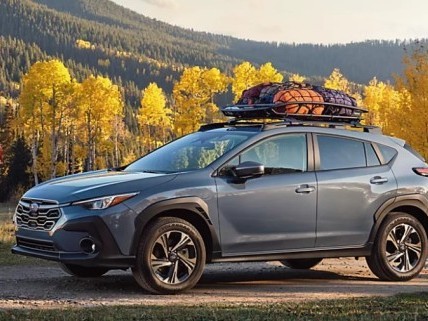
Brand new hybrid system, range over 1000km! New model Subaru Crosstrek coming in December!
RobertOct 22, 2024

Subaru Registers New EV Trademark, Signaling Strategic Shift
Kevin WongAug 8, 2025
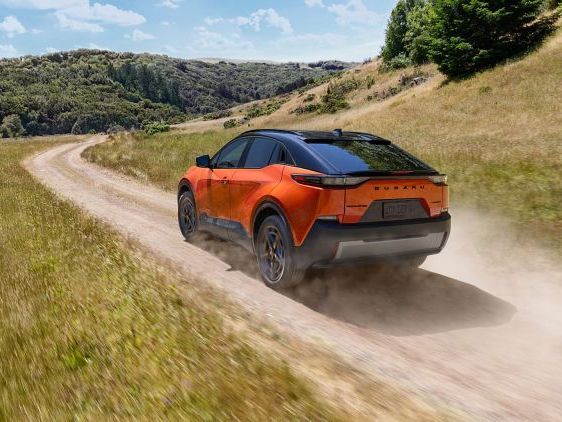
Uncharted is Subaru's first front-wheel-drive car, with a range of up to 482 kilometers.
MichaelJul 18, 2025
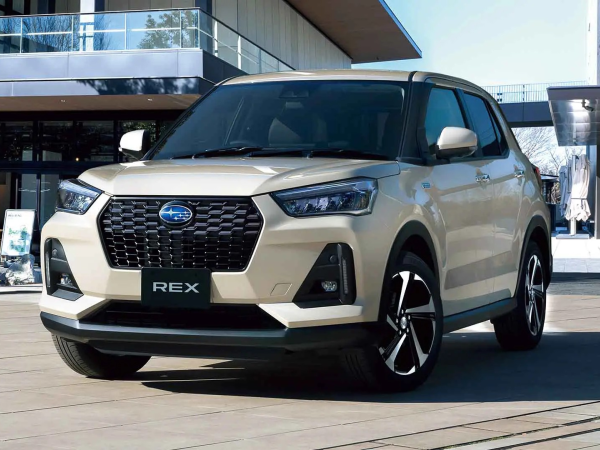
SUBARU REX Hybrid vs Nissan e-POWER: Spot the Difference!
WilliamJun 24, 2025
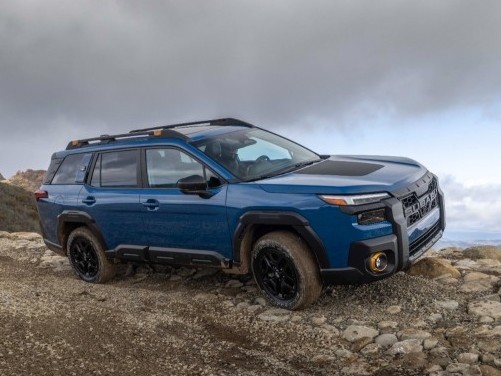
All-New Subaru Outback Debuts with SUV-Inspired Styling
JohnApr 22, 2025
View More



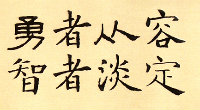

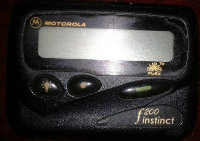












Pros
Cons